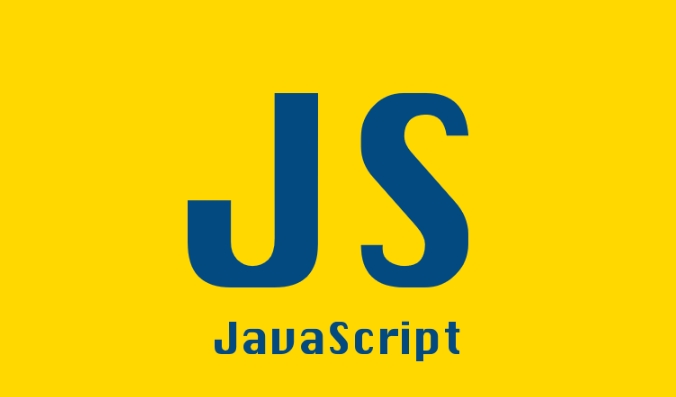 Web Front-end
Web Front-end
 JS Tutorial
JS Tutorial
 Setting Up a Professional JavaScript Project with ESLint and Prettier
Setting Up a Professional JavaScript Project with ESLint and Prettier
Setting Up a Professional JavaScript Project with ESLint and Prettier
Jul 26, 2025 am 06:53 AMInitialize the project with npm init -y and install ESLint, Prettier, eslint-config-prettier, and eslint-plugin-prettier as dev dependencies. 2. Create an .eslintrc.cjs file to configure ESLint with recommended rules and Prettier integration, and set up a .prettierrc file for formatting preferences alongside a .prettierignore file to exclude specific files. 3. Add lint, lint:fix, and format scripts to package.json, and configure VS Code with ESLint and Prettier extensions to format on save and apply fixes automatically. 4. Optionally, install husky and lint-staged to run ESLint and Prettier on staged files before each commit, ensuring code quality is enforced in the Git workflow. This setup guarantees consistent, clean, and maintainable JavaScript code across teams and projects.

Setting up a professional JavaScript project isn’t just about writing code — it’s about ensuring consistency, readability, and maintainability across your team and codebase. Two essential tools for achieving this are ESLint and Prettier. ESLint helps catch errors and enforces coding standards, while Prettier automatically formats your code to look clean and consistent.

Here’s how to set them up together in a modern JavaScript project.
1. Initialize Your Project and Install Dependencies
Start by initializing a new project (if you haven’t already):

npm init -y
Then install the core packages:
npm install --save-dev eslint prettier eslint-config-prettier eslint-plugin-prettier
eslint: The linter itself.prettier: The code formatter.eslint-config-prettier: Disables ESLint rules that conflict with Prettier.eslint-plugin-prettier: Runs Prettier as an ESLint rule so you can fix formatting issues during linting.
Optional: If you're using React, TypeScript, or other tools, you’ll need additional plugins like
eslint-plugin-react,@typescript-eslint/eslint-plugin, etc.
2. Configure ESLint and Prettier
Create an .eslintrc.cjs file in your project root:
// .eslintrc.cjs
module.exports = {
env: {
browser: true,
es2021: true,
node: true,
},
extends: [
'eslint:recommended',
'plugin:prettier/recommended', // Enables Prettier and turns off conflicting rules
],
parserOptions: {
ecmaVersion: 'latest',
sourceType: 'module',
},
rules: {
// Custom ESLint rules go here
'no-console': 'warn',
'no-debugger': 'error',
},
};This config:
- Uses ESLint’s recommended rules.
- Integrates Prettier via
plugin:prettier/recommended, which includesprettierandeslint-config-prettierautomatically. - Sets environment and language options.
Now create a .prettierrc file to customize formatting:
// .prettierrc
{
"semi": true,
"trailingComma": "es5",
"singleQuote": true,
"printWidth": 80,
"tabWidth": 2
}You can adjust these based on your team’s preferences.
Also, create a .prettierignore to skip formatting certain files:
# .prettierignore node_modules dist build *.min.js
3. Set Up Scripts and Editor Integration
Add useful scripts to your package.json:
"scripts": {
"lint": "eslint . --ext .js,.jsx",
"lint:fix": "eslint . --ext .js,.jsx --fix",
"format": "prettier --write ."
}Now you can:
- Run
npm run lintto check for linting issues. - Run
npm run lint:fixto auto-fix fixable issues. - Run
npm run formatto format all files.
Editor Setup (VS Code)
For real-time feedback, install these extensions:
- ESLint by Microsoft
- Prettier – Code formatter
Then update your VS Code settings.json:
{
"editor.defaultFormatter": "esbenp.prettier-vscode",
"editor.formatOnSave": true,
"editor.codeActionsOnSave": {
"source.fixAll.eslint": true
},
"eslint.validate": ["javascript", "javascriptreact"]
}This ensures:
- Files are formatted on save.
- ESLint fixes are applied automatically.
- Prettier is the default formatter.
Make sure you don’t have conflicting formatters enabled (like Beautify).
4. (Optional) Add Git Hooks with Husky and lint-staged
To enforce code quality before commits, use husky and lint-staged.
Install them:
npm install --save-dev husky lint-staged
Enable Git hooks and configure:
npx husky install npm pkg set scripts.prepare="husky install"
Add a pre-commit hook:
npx husky add .husky/pre-commit "npx lint-staged"
Then configure lint-staged in package.json:
"lint-staged": {
"*.{js,jsx}": [
"eslint --fix",
"prettier --write"
]
}Now, every time you commit JavaScript files, they’ll be linted and formatted automatically.
That’s it. You’ve set up a robust foundation for clean, consistent JavaScript code. With ESLint catching bugs and Prettier handling style, your team can focus on logic — not formatting debates.
Basically, just make sure the tools agree with each other, your editor supports them, and your Git workflow enforces them. Not flashy, but absolutely essential for professional work.
The above is the detailed content of Setting Up a Professional JavaScript Project with ESLint and Prettier. For more information, please follow other related articles on the PHP Chinese website!

Hot AI Tools

Undress AI Tool
Undress images for free

Undresser.AI Undress
AI-powered app for creating realistic nude photos

AI Clothes Remover
Online AI tool for removing clothes from photos.

Clothoff.io
AI clothes remover

Video Face Swap
Swap faces in any video effortlessly with our completely free AI face swap tool!

Hot Article

Hot Tools

Notepad++7.3.1
Easy-to-use and free code editor

SublimeText3 Chinese version
Chinese version, very easy to use

Zend Studio 13.0.1
Powerful PHP integrated development environment

Dreamweaver CS6
Visual web development tools

SublimeText3 Mac version
God-level code editing software (SublimeText3)
 How to make an HTTP request in Node.js?
Jul 13, 2025 am 02:18 AM
How to make an HTTP request in Node.js?
Jul 13, 2025 am 02:18 AM
There are three common ways to initiate HTTP requests in Node.js: use built-in modules, axios, and node-fetch. 1. Use the built-in http/https module without dependencies, which is suitable for basic scenarios, but requires manual processing of data stitching and error monitoring, such as using https.get() to obtain data or send POST requests through .write(); 2.axios is a third-party library based on Promise. It has concise syntax and powerful functions, supports async/await, automatic JSON conversion, interceptor, etc. It is recommended to simplify asynchronous request operations; 3.node-fetch provides a style similar to browser fetch, based on Promise and simple syntax
 JavaScript Data Types: Primitive vs Reference
Jul 13, 2025 am 02:43 AM
JavaScript Data Types: Primitive vs Reference
Jul 13, 2025 am 02:43 AM
JavaScript data types are divided into primitive types and reference types. Primitive types include string, number, boolean, null, undefined, and symbol. The values are immutable and copies are copied when assigning values, so they do not affect each other; reference types such as objects, arrays and functions store memory addresses, and variables pointing to the same object will affect each other. Typeof and instanceof can be used to determine types, but pay attention to the historical issues of typeofnull. Understanding these two types of differences can help write more stable and reliable code.
 React vs Angular vs Vue: which js framework is best?
Jul 05, 2025 am 02:24 AM
React vs Angular vs Vue: which js framework is best?
Jul 05, 2025 am 02:24 AM
Which JavaScript framework is the best choice? The answer is to choose the most suitable one according to your needs. 1.React is flexible and free, suitable for medium and large projects that require high customization and team architecture capabilities; 2. Angular provides complete solutions, suitable for enterprise-level applications and long-term maintenance; 3. Vue is easy to use, suitable for small and medium-sized projects or rapid development. In addition, whether there is an existing technology stack, team size, project life cycle and whether SSR is needed are also important factors in choosing a framework. In short, there is no absolutely the best framework, the best choice is the one that suits your needs.
 JavaScript time object, someone builds an eactexe, faster website on Google Chrome, etc.
Jul 08, 2025 pm 02:27 PM
JavaScript time object, someone builds an eactexe, faster website on Google Chrome, etc.
Jul 08, 2025 pm 02:27 PM
Hello, JavaScript developers! Welcome to this week's JavaScript news! This week we will focus on: Oracle's trademark dispute with Deno, new JavaScript time objects are supported by browsers, Google Chrome updates, and some powerful developer tools. Let's get started! Oracle's trademark dispute with Deno Oracle's attempt to register a "JavaScript" trademark has caused controversy. Ryan Dahl, the creator of Node.js and Deno, has filed a petition to cancel the trademark, and he believes that JavaScript is an open standard and should not be used by Oracle
 What is the cache API and how is it used with Service Workers?
Jul 08, 2025 am 02:43 AM
What is the cache API and how is it used with Service Workers?
Jul 08, 2025 am 02:43 AM
CacheAPI is a tool provided by the browser to cache network requests, which is often used in conjunction with ServiceWorker to improve website performance and offline experience. 1. It allows developers to manually store resources such as scripts, style sheets, pictures, etc.; 2. It can match cache responses according to requests; 3. It supports deleting specific caches or clearing the entire cache; 4. It can implement cache priority or network priority strategies through ServiceWorker listening to fetch events; 5. It is often used for offline support, speed up repeated access speed, preloading key resources and background update content; 6. When using it, you need to pay attention to cache version control, storage restrictions and the difference from HTTP caching mechanism.
 Handling Promises: Chaining, Error Handling, and Promise Combinators in JavaScript
Jul 08, 2025 am 02:40 AM
Handling Promises: Chaining, Error Handling, and Promise Combinators in JavaScript
Jul 08, 2025 am 02:40 AM
Promise is the core mechanism for handling asynchronous operations in JavaScript. Understanding chain calls, error handling and combiners is the key to mastering their applications. 1. The chain call returns a new Promise through .then() to realize asynchronous process concatenation. Each .then() receives the previous result and can return a value or a Promise; 2. Error handling should use .catch() to catch exceptions to avoid silent failures, and can return the default value in catch to continue the process; 3. Combinators such as Promise.all() (successfully successful only after all success), Promise.race() (the first completion is returned) and Promise.allSettled() (waiting for all completions)
 Leveraging Array.prototype Methods for Data Manipulation in JavaScript
Jul 06, 2025 am 02:36 AM
Leveraging Array.prototype Methods for Data Manipulation in JavaScript
Jul 06, 2025 am 02:36 AM
JavaScript array built-in methods such as .map(), .filter() and .reduce() can simplify data processing; 1) .map() is used to convert elements one to one to generate new arrays; 2) .filter() is used to filter elements by condition; 3) .reduce() is used to aggregate data as a single value; misuse should be avoided when used, resulting in side effects or performance problems.
 JS roundup: a deep dive into the JavaScript event loop
Jul 08, 2025 am 02:24 AM
JS roundup: a deep dive into the JavaScript event loop
Jul 08, 2025 am 02:24 AM
JavaScript's event loop manages asynchronous operations by coordinating call stacks, WebAPIs, and task queues. 1. The call stack executes synchronous code, and when encountering asynchronous tasks, it is handed over to WebAPI for processing; 2. After the WebAPI completes the task in the background, it puts the callback into the corresponding queue (macro task or micro task); 3. The event loop checks whether the call stack is empty. If it is empty, the callback is taken out from the queue and pushed into the call stack for execution; 4. Micro tasks (such as Promise.then) take precedence over macro tasks (such as setTimeout); 5. Understanding the event loop helps to avoid blocking the main thread and optimize the code execution order.






